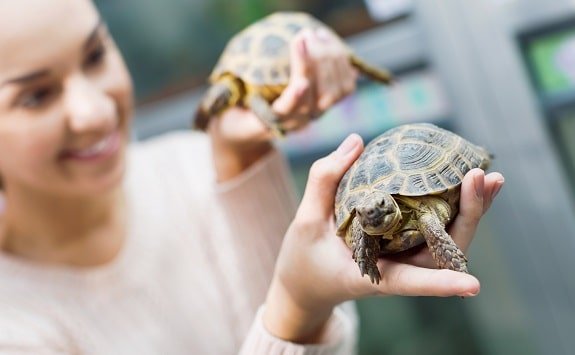Table of Contents
Handling a Russian Tortoise requires care and understanding to ensure the safety and comfort of your pet. Russian Tortoises are known for their hardy nature, but like all pets, they need to be handled properly to prevent stress and injury. In this guide, we provide seven essential tips for handling a Russian Tortoise to help you build a trusting relationship with your shelled companion.

1. Approach Gently and Calmly
When handling a Russian Tortoise, it’s important to approach them gently and calmly. Sudden movements can startle them, causing stress. Move slowly and speak softly to reassure your tortoise. For more on understanding tortoise behavior, visit The Spruce Pets Understanding Tortoise Behavior.
2. Support Their Body Properly
Always support the tortoise’s body properly when lifting them. Place one hand under the front legs and the other under the hind legs, ensuring you are supporting their entire weight. Avoid grabbing them by the shell alone, as this can cause discomfort and injury. For more on safe handling techniques, see Reptiles Magazine Handling Tips.
3. Limit Handling Time
Limit the amount of time you handle your Russian Tortoise to prevent stress. While some tortoises may enjoy being handled, prolonged periods can be overwhelming. Aim for short, gentle interactions and observe your tortoise’s behavior for signs of stress. For more on recognizing stress in tortoises, visit PetMD Recognizing Tortoise Stress.
4. Create a Safe Environment
Ensure that the environment where you handle your tortoise is safe and secure. Avoid high surfaces from which they can fall and injure themselves. A soft, enclosed area is ideal for handling sessions to prevent accidents. For more on creating a safe habitat, see The Spruce Pets Tortoise Habitat Setup.
5. Handle with Clean Hands
Always wash your hands before and after handling your Russian Tortoise. This prevents the spread of bacteria and ensures that no harmful substances are transferred to your pet. Tortoises can be sensitive to lotions, soaps, and other chemicals that may be on your skin. For more on hygiene practices, visit CDC Guidelines for Handling Reptiles.
6. Be Observant and Responsive
Pay close attention to your tortoise’s reactions while handling them. If they show signs of distress, such as retracting into their shell or hissing, gently place them back in their enclosure. Building trust takes time, so be patient and responsive to their needs. For more on reading tortoise body language, see Vetstreet Tortoise Body Language.
7. Gradual Introduction to Handling
If your tortoise is not used to being handled, start with brief, gentle sessions and gradually increase the time as they become more comfortable. Use positive reinforcement, such as offering a favorite treat, to create a positive association with handling. For more on introducing handling to your tortoise, visit Tortoise Protection Group Handling Tips.
Conclusion
Handling a Russian Tortoise properly is essential for building a trusting relationship and ensuring their well-being. By following these seven essential tips, you can make handling a positive experience for both you and your tortoise. Remember, patience and gentle care are key to successful interactions. For more detailed care advice, check out our Pet Care Guide.
FAQs on Handling a Russian Tortoise
How often should I handle my Russian Tortoise?
Handle your Russian Tortoise a few times a week, but always observe their behavior and adjust based on their comfort level.
Can handling a tortoise stress them out?
Yes, excessive handling can stress a tortoise. Limit handling sessions and be mindful of their reactions to avoid causing stress.
What is the best way to pick up a Russian Tortoise?
Support their body properly by placing one hand under the front legs and the other under the hind legs. Lift gently and securely.
Should I let my Russian Tortoise roam freely indoors?
While supervised exploration can be beneficial, ensure the area is safe and free from hazards. Limit free-roaming time to prevent stress and injury.
How can I tell if my tortoise is stressed during handling?
Signs of stress include retracting into their shell, hissing, or trying to escape. If you observe these behaviors, gently place them back in their enclosure.
Are there any special considerations for handling young or old tortoises?
Young tortoises may be more fragile and require extra gentle handling, while older tortoises may have health issues that necessitate careful support and shorter handling sessions.











